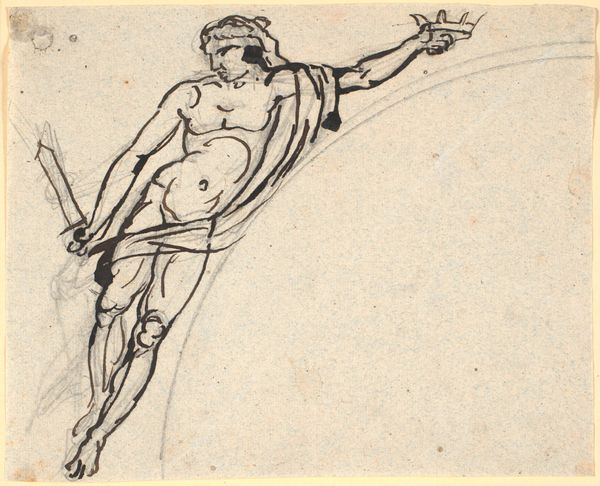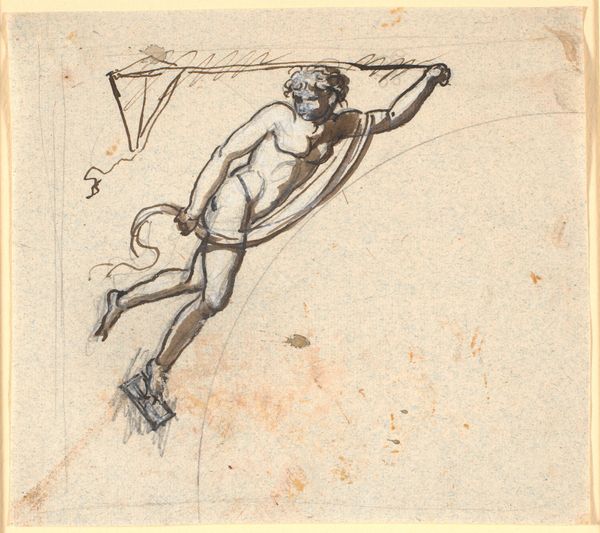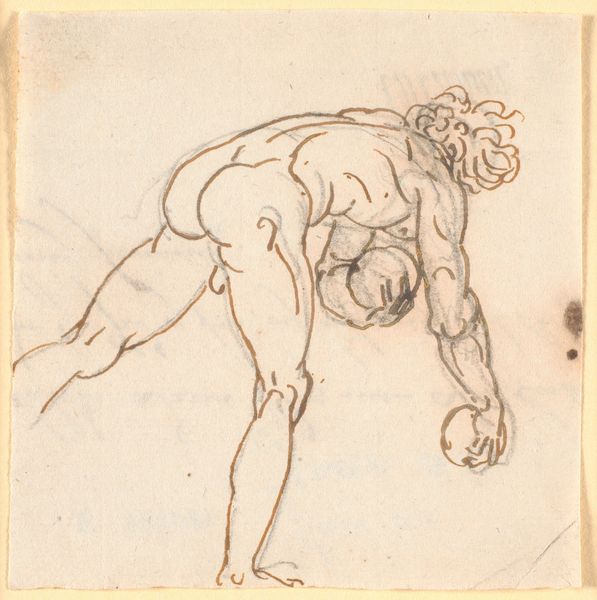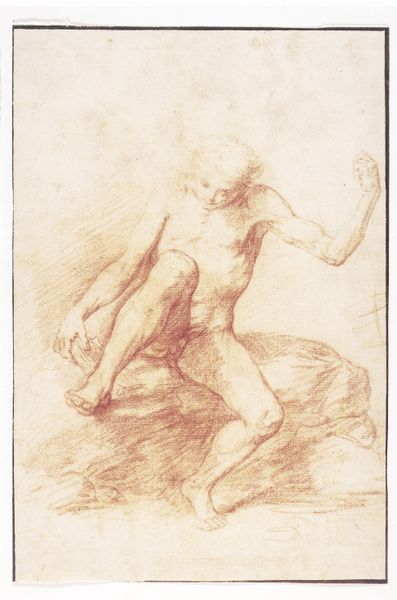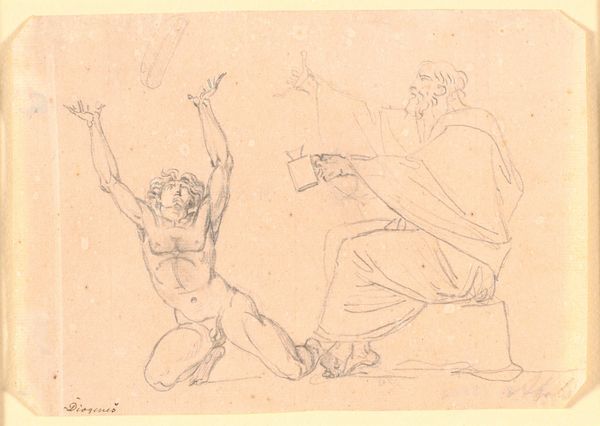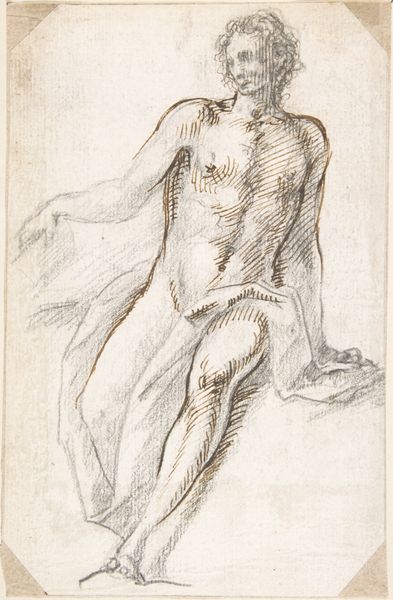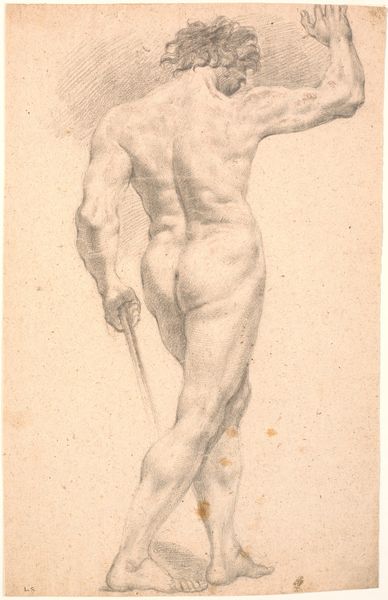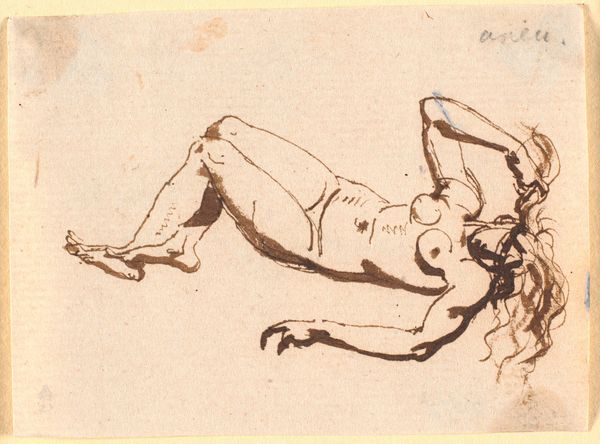
drawing, ink
#
drawing
#
classical-realism
#
figuration
#
ink
#
academic-art
#
nude
Dimensions: 84 mm (height) x 92 mm (width) (bladmaal)
Curator: The artwork before us is "Siddende mandlig model" by Nicolai Abildgaard, estimated to have been created between 1743 and 1809. The piece is an ink drawing. Editor: My first impression is the tension created by the sharp, angular lines against the subject’s relaxed pose—almost languid, yet deliberately observed. Curator: Yes, look at the use of ink wash to describe the musculature and the light, indicative of Abildgaard’s classical realism style and academic training. The choice of ink suggests a study, a practice in rendering the human form. Editor: I’m immediately thinking about the male gaze embedded within academic art traditions and the social contexts that shape our perception of the nude body. How were images like this used to reinforce power dynamics within artistic institutions and beyond? Curator: Absolutely. One could further scrutinize the kind of paper employed. The material aspect reminds us this was not meant as high art, per se, but functions rather as a pedagogical exercise or a preliminary work—valuable both for its functionality and craftsmanship. Editor: And thinking about pedagogical exercises—what kind of body is being legitimized here? Who gets to represent, who is represented, and how did that representation shape constructions of masculinity, for instance, both then and now? The water jug to the right gives me pause. Curator: Well, we can consider its scale; it is secondary in compositional importance to the main subject. One can infer function, given proximity to the figure and the folded towel or drapery, all pointing to cleanliness, which indicates access to means that not everyone in Abildgaard’s contemporary society had access to. Editor: Yes, there's a whole system of valuation implied through that tiny jug. So much loaded information about social stratification. It pushes me to think of how our relationship to images such as these today invites and requires critique from all viewers. Curator: I think that’s key. A piece like this speaks to how labor, the means of artistic production, intersects with these broader themes of identity and politics you’ve highlighted. Editor: Right, considering the model and the presumed owner, the access points reflect so many societal power structures worth interrogating further. It gives me pause to consider. Curator: Definitely something to keep thinking about. Thanks for the stimulating conversation! Editor: My pleasure!
Comments
No comments
Be the first to comment and join the conversation on the ultimate creative platform.
